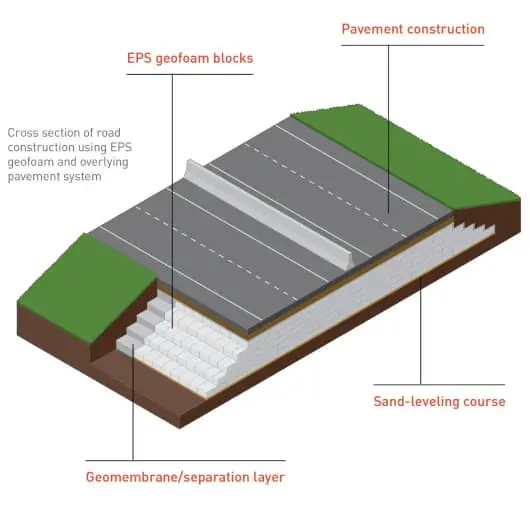Geofoam has been used to make loading docks, ramps, and other raised flooring elevations throughout the United States and beyond. This lightweight fill material for voids is available with 1% deformation and compression strengths ranging from 18.6 psi to 2.2 psi. In fact, geofoam was used as the void fill for numerous high-profile renovation projects such as the $8 million Friley Residence hall renovation at Iowa State University. Geofoam was used to generate a slope for handicap ramps, stairway levels and myriad raised platforms. The EPS geofoam was created in the factory and subsequently delivered in a form that was immediately ready for installation.

Geofoam was also used to build bridge approach ramps in the I-405 Interchange Direct Connector Project. Soil was used for some of the ramps yet geofoam proved optimal for other portions as the soil below the highway was soft to the point that it would sink or settle beneath the compacted soil’s weight as time progresses. Geofoam ultimately proved to be the answer, ensuring the project could move forward on time. Upwards of 3,000 geofoam blocks were installed between the ramp’s concrete walls.
This material has been used for Kirkland’s direct access ramp, the SR 519 by Seattle’s Safeco Field and Bellevue’s 10th Street Bridge. The builders who spearheaded these projects relied on geofoam as opposed to dirt as a considerable amount of work would be necessary to enhance the ground for dirt to prove reliable. In fact, geofoam is so light in weight and easy to implement that it can be installed by any labor force. There is no sense in forcing crews to transport huge piles of dirt to work zones, dump them and wait for settling to occur when using geofoam is cheaper and quicker.